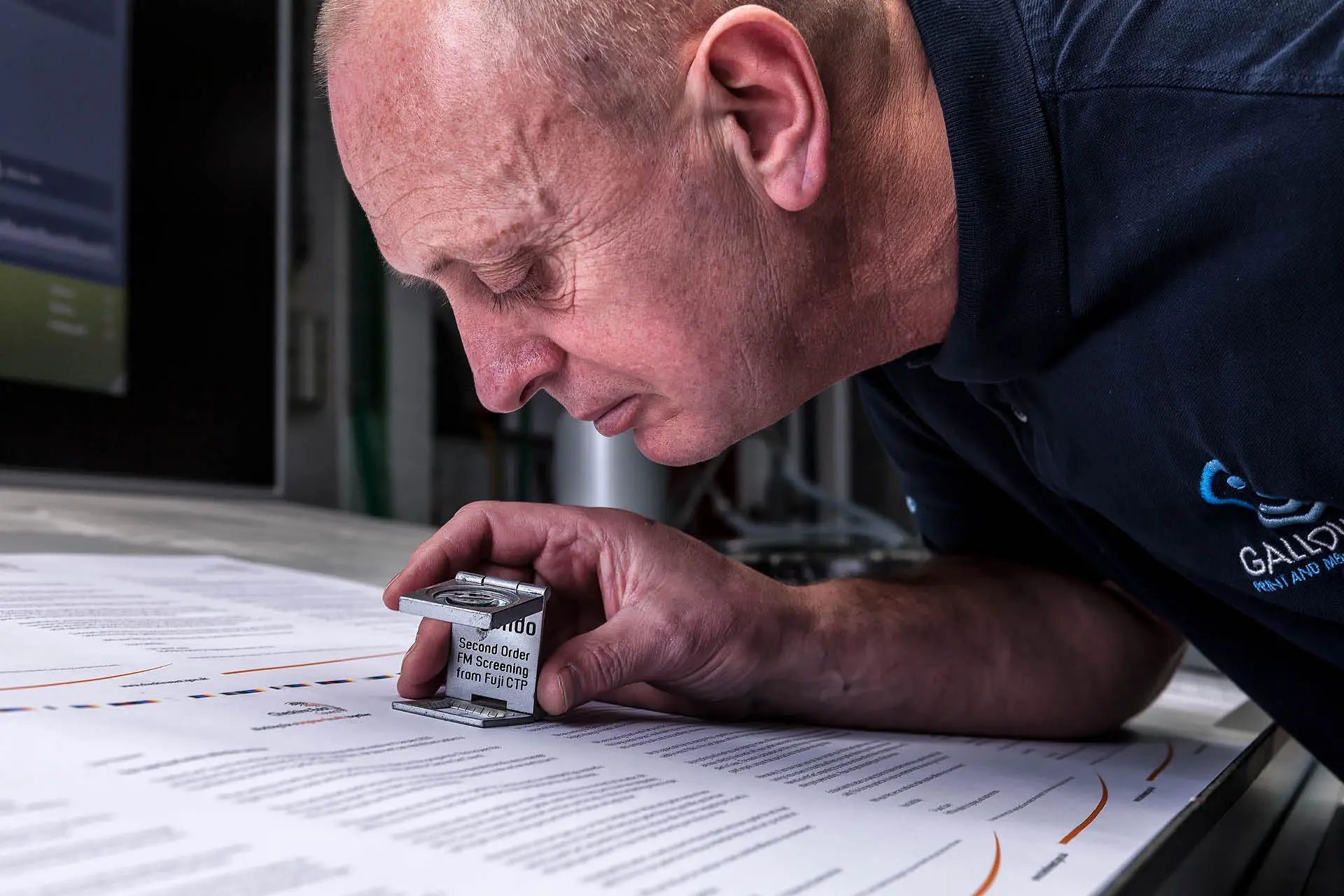11 Simple guidelines to follow for print ready artwork
1. Artwork
All artwork to be supplied in the number of colours quoted with no colour conversions applied. All artwork to be sent to us should be converted to CMYK and not RGB colour format. For more information check out our Converting Colour for Print – Pantone to CMYK
2. Exporting files
Firstly, only export files with vector-based software such as Adobe InDesign in a PDF file format. Don’t use image manipulation software like Photoshop. These programs create bitmap images and the end result will be pixelated. See below for our special Galloways printing presets.
3. Size and No. of Pages
The artwork should be in line with the quoted pagination and finished size specifications. Unfortunately, if this doesn’t match the quotation this will incur additional costs.
4. Supply all pages as single pages.
All pages are supplied as single pages, as opposed to spreads. However, the only exception is when printing PUR bound brochures with a specified spine size. You will need to contact us for the spine width in this instance upfront to ensure your job looks as designed.
5. Don’t forget bleed.
All full-colour pages should be supplied with 3mm bleed, and trim and bleed marks should be shown. Bleed is ink that prints beyond the trim edge of the page to ensure it extends to the edge of the page after trimming. How to add bleed is shown here.
6. Flatten artwork
Galloways requires that all artwork files supplied to it be flattened PDFs to ensure file integrity.
7. High Resolution
All imagery within the artwork to be high resolution, with a minimum of 240dpi however we prefer 300dpi. DPI stands for dots per inch. If you were to print a 300DPI image, it would have a clarity of 90,000 pixels per square inch. This is three times the resolution of a 100DPI image. The higher the pixel density, the sharper and clearer the image will look.
8. Individual files for each job.
Do not provide us with multiple jobs or artwork types in a single pdf. This will confuse matters.
9. 100% Black
Ensure black text is set at 100% black and not a colour mix of CMYK. (Registration black is not used…ever!)
10. Discard white overprint
If white text is not set to overprint, the white which is unprintable will not show on the final printed file.
11. Embed all fonts
Ensure all fonts are packaged and embedded or converted to vector paths. Learn how to convert your text to outlines by watching this quick tutorial
